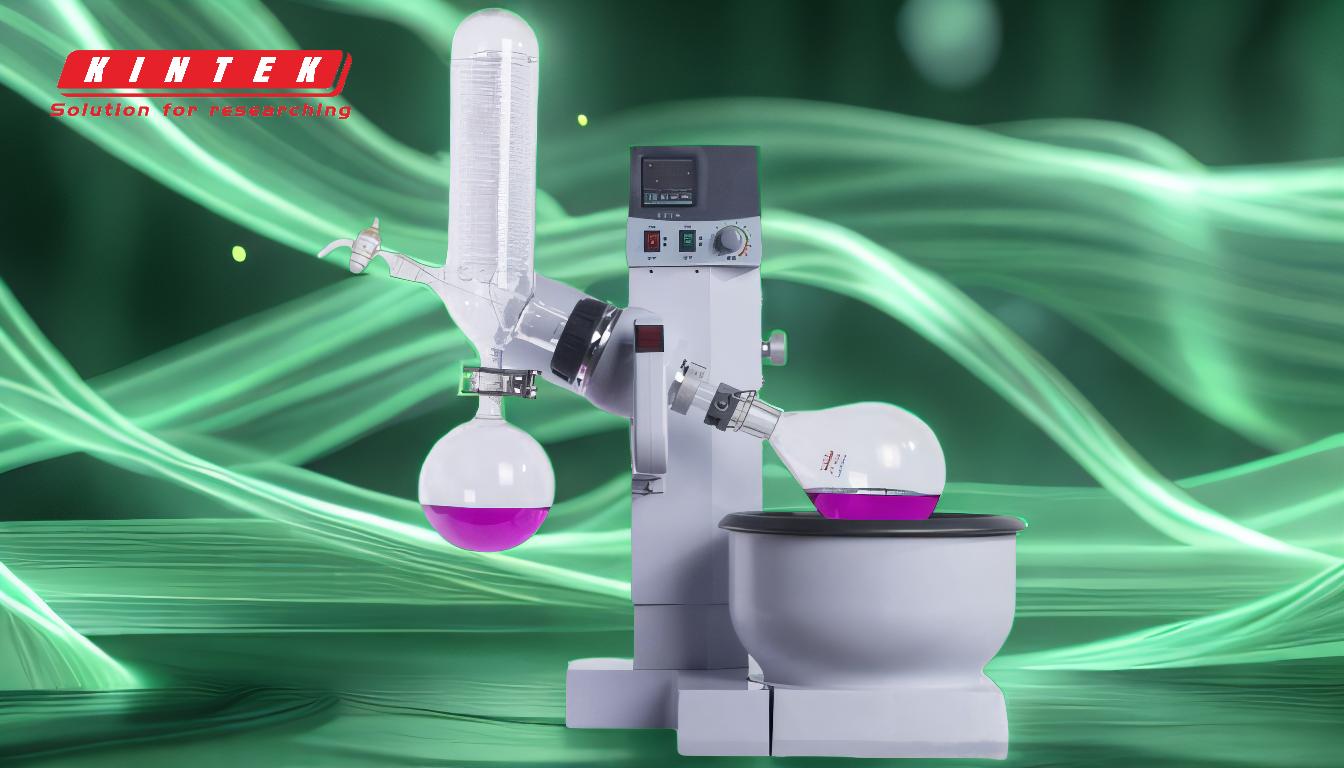The condenser temperature in a rotary evaporator should typically be set below zero degrees Celsius to ensure efficient condensation of vapors. This low temperature is crucial for effectively condensing solvent vapors, especially when dealing with volatile solvents. The water bath temperature, on the other hand, is usually set between 25°C and 50°C, depending on the solvent being evaporated. Lower temperatures in the water bath can help prevent thermal decomposition of sensitive compounds but may slow down the evaporation process. Balancing these temperatures is key to achieving optimal performance and safety in rotary evaporation.
Key Points Explained:

-
Condenser Temperature Should Be Below Zero:
- The condenser is responsible for converting the solvent vapors back into liquid form. Setting the condenser temperature below zero ensures that the vapors condense efficiently, especially for volatile solvents. This is critical to prevent loss of solvent and to maintain the integrity of the process.
-
Water Bath Temperature Range (25°C to 50°C):
- The water bath temperature is typically set between 25°C and 50°C, depending on the solvent's boiling point. This range is sufficient for most common lab solvents. Lower temperatures in the water bath can reduce the risk of thermal decomposition of sensitive compounds but may slow down the evaporation process.
-
Balancing Temperature for Efficiency and Safety:
- While lower temperatures in the water bath can reduce the risk of bumping (sudden boiling that can cause splashing), they can also slow the evaporation process. It is important to find a balance that ensures both efficiency and safety. Tools like a manometer and distillation nomograph can help in selecting the appropriate temperature.
-
Importance of SOP and Equipment Specifications:
- Reviewing your Standard Operating Procedure (SOP) and understanding the specifications of your rotary evaporator, including the water bath temperature capacity, is crucial. Water baths with temperature ranges from room temperature +5°C to 95°C are available, and selecting the right one based on your needs is important.
-
Use of Low-Vacuum Pumps:
- Most common lab solvents require a low-vacuum pump, which can be replaced by a sink aspirator. The combination of appropriate vacuum pressure and temperature control is essential for effective rotary evaporation. Lower temperatures can reduce the risk of bumping but may require adjustments in vacuum pressure to maintain efficiency.
By carefully managing both the condenser and water bath temperatures, and understanding the specific requirements of the solvents being used, you can achieve optimal results in rotary evaporation while minimizing risks.
Summary Table:
| Parameter | Optimal Setting | Purpose |
|---|---|---|
| Condenser Temperature | Below 0°C | Ensures efficient condensation of volatile solvent vapors. |
| Water Bath Temperature | 25°C to 50°C | Balances evaporation speed and prevents thermal decomposition of compounds. |
| Vacuum Pressure | Low-vacuum pump or sink aspirator | Reduces bumping risk and enhances evaporation efficiency. |
Need help optimizing your rotary evaporator setup? Contact our experts today for personalized advice!












